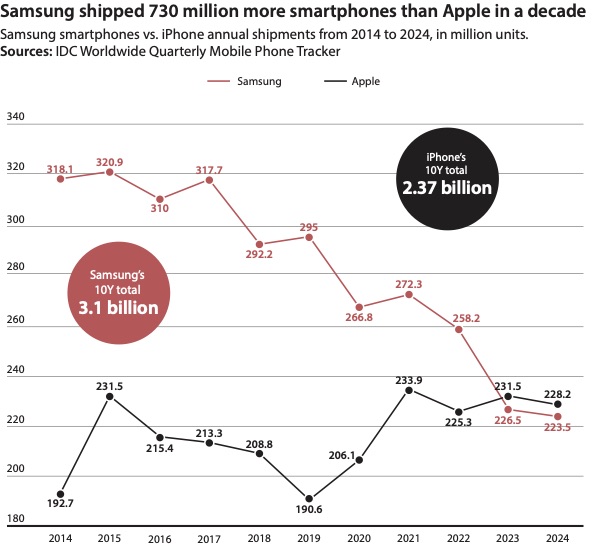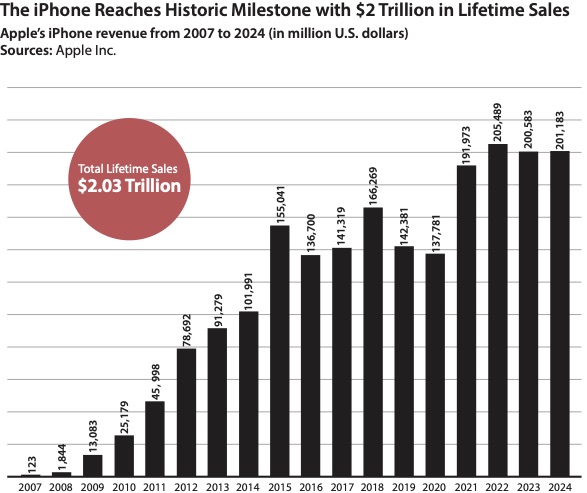Jastra Kranjec. February 11, 2025

No tech rivalry comes close to the battle between Apple and Samsung. The competition between the two giants is unique because Apple builds everything in-house, creating a closed, seamless ecosystem, while Samsung offers a wide range of devices powered by Android. Their intense competition, brand loyalty, and constant innovation set them apart from other tech battles. Yet, regarding long-term sales, Samsung remains the absolute king.
According to data presented by Techgaged.com, Samsung has shipped 3.1 billion smartphones in the past decade, or 730 million more than Apple.
A massive shipment gap despite a 30 percent drop in sales
Samsung and Apple have been the two biggest smartphone vendors for fifteen years, each holding over 20 percent of the market. While both have heavily invested in producing the highest-quality devices and have millions of loyal users worldwide, Samsung has consistently led in global smartphone shipments.
IDC’s Worldwide Quarterly Mobile Phone Tracker data shows that Samsung shipped an astonishing 3.1 billion smartphones over the past ten years, or 730 million more than Apple, which reported 2.3 billion in 10-year sales. To put that into perspective, 730 million smartphones are enough to cover the entire population of North America and nearly that of Europe.
This massive shipment gap is even more fascinating, considering that Samsung’s annual smartphone sales have plummeted by 30 percent over the past decade. The company’s financial reports show Samsung’s smartphone shipments have been falling for three years in a row, reaching 223.5 million in 2024, which is far from the figure reported ten years ago. In 2014, Samsung shipped 318.1 million smartphones worldwide, or nearly 95 million more than last year.
This huge drop comes from the company’s shift in focus from budget-friendly models to premium lines like the Galaxy S and Z series. The rising Chinese competition from Xiaomi, Oppo, and Vivo made the aftermath even worse, with the brands overtaking Samsung’s market share in regions where it once led with affordable devices.
On the other hand, Apple’s strong brand loyalty, software support and longer upgrade cycles have made iPhone users stick to their devices. The company’s growing presence in countries like India only further boosted sales. Statistics show Apple’s annual iPhone shipments have jumped by 18 percent in ten years, translating to 35 million more iPhones sold per year.
In this line, the iPhone is still one of the most recognizable and popular smartphones globally and has surpassed an. extraordinary USD 2 trillion in lifetime sales, according to our previous research.
Samsung’s market share drops by 5.8 percent in a decade, while Apple’s grows by 4.5 percent
While Apple and Samsung remain the industry leaders, their market shares shrunk in 2024 due to the super aggressive growth of Chinese smartphone vendors. According to IDC, Apple ended the year with a strong 23.2 percent market share, a slight dip from 24.7 percent in Q4 2023. However, Apple has gained 4.5 percent in market share over the past decade.
On the other hand, Samsung’s market share dipped both year-over-year and across the decade. In Q4 2024, the company held 15.6 percent of the market, down 0.8 percent from the previous year. However, the 10-year difference is even bigger, showing that Samsung has lost 5.8 percent in market share due to mounting competition.






